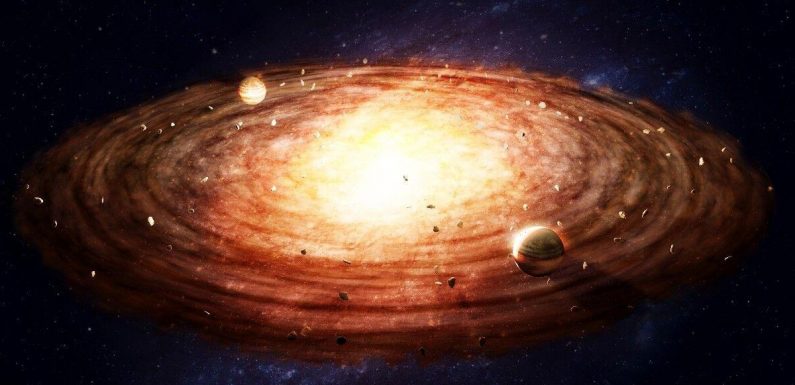
NASA Solar Observatory captures solar flares in October
We use your sign-up to provide content in ways you’ve consented to and to improve our understanding of you. This may include adverts from us and 3rd parties based on our understanding. You can unsubscribe at any time. More info
Using NASA’s orbiting planet hunter, the Transiting Exoplanet Survey Satellite (TESS) helped experts come across a star only 33 lightyears away from Earth, which is orbited by two terrestrial planets. The M-dwarf star has been named HD 260655, while the inner planet which orbits the star every 2.8 days has been given the name HD 260655b.
The outer planet has been given the name HD 260655c.
It orbits the star every 5.7 days.
The planets are among the closest-known rocky planets to have been found outside the Milky Way which astronomers can observe orbiting their stars.
Both planets are known as “super-Earths”, these are terrestrial worlds like the Blue Planet, but larger.
The inner planet is 1.2 times as big around as Earth, while the outer planet is 1.5 times larger.


The star discovered is also smaller than the one present in our solar system, but is one of the brightest in its class.
While the experts are “optimistic” that this is a sign of a habitable world existing in space, the two planets in the newly discovered multiplanetary system are not themselves habitable.
That is because they orbit the star from too close a distance, making it far too hot for liquid to exist on their surfaces.
The surface of the inner planet is thought to be around 436 degrees Celsius, while the outer planet is around 286 degrees Celsius.
But MIT scientist Avi Shporer suggested that because there are as many as five or six planets in multiplanetary systems, more planets could be discovered.

He said: “There are many multiplanet systems hosting five or six planets, especially around small stars like this one.
“Hopefully we will find more, and one might be in the habitable zone.
“That’s optimistic thinking.”
And the newly discovered planets could lay the groundwork for more exciting breakthroughs.
Michelle Kunimoto, a postdoc at MIT and one of the lead scientists who made the discovery, said: “Both planets in this system are each considered among the best targets for atmospheric study because of the brightness of their star.
DON’T MISS
Russia threatens ‘major’ outbreak of fatal disease [REPORT]
Bones discovered at Antarctic glaciers paint ‘disastrous’ picture [REVEAL]
Brexit Britain to take over the skies with Helium airships for Spain [INSIGHT]

“Is there a volatile-rich atmosphere around these planets?
“And are there signs of water or carbon-based species? These planets are fantastic test beds for those explorations.”
NASA’s MIT-led TESS mission is designed to observe the closest and brightest stars.
Another aim is to detect periodic dips in light that might indicate a planet is passing.

Back in December, experts discovered a gigantic exoplanet orbiting in a double-star system so warm and large that some astronomers didn’t believe a planet could exist around it.
The huge exoplanet, 10 times bigger than Jupiter, was spotted by astronomers using the European Southern Observatory’s Very Large Telescope in Chile
This was just one of more than more than 5,000 exoplanets that have been discovered orbiting distant stars.
Source: Read Full Article